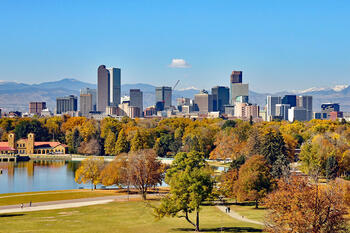
Not long ago, Colorado, Washington, and Oregon were widely hailed as states with bright futures. For decades, they attracted scores of out-of-state migrants, turning Denver, Seattle, and Portland into celebrated urban hubs.
But that changed as these states began adopting the very policies—above all on energy, housing, and regulation—that many newcomers had fled from in California. Once politically purple, Colorado, Washington, and Oregon have turned solid blue, embracing the same agenda that even the New York Times concedes has turned “the California dream” into “a mirage.”
True, Colorado, Washington, and Oregon have yet to reach California’s levels of dysfunction. Yet each shows signs suggestive of the Golden State’s experience, including lower job growth, sluggish housing-construction rates, a deteriorating business climate, and surging domestic out-migration.
The shift in migration patterns may be the clearest sign of the three states’ Californication. Like California, these states long attracted newcomers with their remarkable natural beauty. People only began leaving California—still arguably the most beautiful state in the continental U.S., with some of the most pleasant weather on earth—when its political, economic, and cultural climate became unbearable, especially for young families.
Initially, as California began hemorrhaging residents, Washington, Oregon, and Colorado kept growing as destinations for domestic migrants. Between 2010 and 2020, Colorado gained more than 390,000 domestic migrants; since 2020, that total has fallen below 24,000, per the Census Bureau. Oregon and Washington together gained well over 600,000 net domestic migrants between 2010 and 2020, but they’ve lost more than 40,000 since 2020.
What happened? Politics. Until the 2010s, all three states boasted robust two-party systems, with liberal-leaning metros and conservative-tilting countrysides. No longer. Washington, which has not elected a Republican governor this century, may be the furthest along the progressive path. Neighboring Oregon is not far behind, with consistent Democratic control of the statehouse and governor’s office since 2006.
The biggest shift has taken place in Colorado, where Republicans were highly competitive as late as 2018. Governor Jared Polis’s image as a “libertarian” largely reflects his positions on social issues. Polis, who comes from the ultra-progressive university town of Boulder, presides over a state with the nation’s sixth-worst regulatory burden.
Read the rest of this piece at: City Journal.
Joel Kotkin is the author of The Coming of Neo-Feudalism: A Warning to the Global Middle Class. He is the Roger Hobbs Presidential Fellow in Urban Futures at Chapman University and and directs the Center for Demographics and Policy there. He is Senior Research Fellow at the Civitas Institute at the University of Texas in Austin. Learn more at joelkotkin.com and follow him on Twitter @joelkotkin.
Photo credit: James St. John, view of Denver via Flickr under CC 2.0 License.












